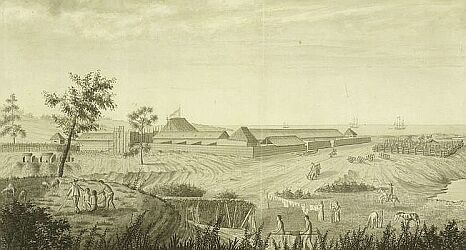 Jose Cardero, Presidio of Monterey, 1791, (c) MCHS | 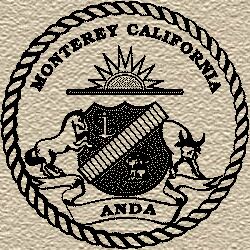 |
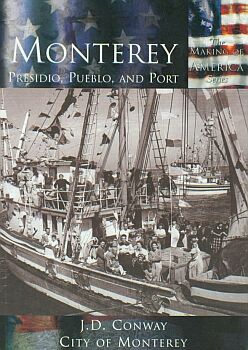 |
On my journey through history, J.D. Conway's Book For other books on Monterey's history, visit the California History Room and check Historic Monterey.
In addition to J.D. Conway's excellent book, I searched the internet extensively. I don't want to rank any source higher than others, but The City of Monterey,
Monterey County,
|
|
|
vmoerbitz@kagan.com |
 |
General History of CaliforniaInn-California
|
 |
General History of MontereyCity of Monterey |
The Prehistoric Period
The Indian Period
The Spanish Period
The Mexican Period
The US-American Period
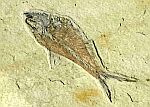 |
Prehistoric Period |
General Information |
Monterey County |
Timeline | |
65 mil. years ago |
Sorry, but there were no dinosaurs roaming what is now California because throughout most of the Mesozoic Era, the Pacific border of North America, from California to Alaska, was submerged. About 65 million years ago, at the end of the Jurassic Period, widespread folding happened along the western border of the North American continent. In California, the Sierra Nevada, and the Coast Ranges were formed during that time. |
58 mil. years ago |
During the Paleocene Epoch, the Cretaceous inland seas gradually withdrew from central and southwest California. |
36 mil. years ago |
The Eocene Epoch in California was mainly marked by the submergence of the Central Valley. |
25 mil. years ago |
During the Oligocene Epoch, California's coast was largely elevated. The archaic mammals of the Paleocene disappeared, the ancestors of today's dogs and cats entered the scene and the brontotherium, the largest mammal to ever live in North America, could be found in California's Death Valley. |
13 mil. years ago |
At the beginning of the Miocene Epoch, the Central Valley was still submerged. Later in the period, the Coast Ranges were elevating along with the first known movement along the San Andreas fault zone. A distinct cooling of the climate resulted in the reduction of forests and an increase in grassy plains. |
2 mil. years ago |
In the Pliocene Epoch, the outlines of California were almost the same as in recent time. Volcanic activity continued and at the end of the Epoch, the Sierra Nevada was elevated and tilted to the west. The climate became cooler and drier and foreshadowed the glacial climates of the Pleistocene epoch. |
10,000 years ago |
The Pleistocene epoch is commonly referred to as "The Great Ice Age." It was not the only glacial period (Ice Age) in Earth's history, but it was the one marking the first appearance of modern humans approximately 500,000 years ago and the migration of humans to the American continents. |
Back to top |
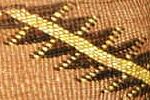 |
Indian Period |
General Information |
Monterey County |
Timeline | |
135,000 years ago |
A very controversial theory claims that early humans may have settled at Calico Early Man Site near Barstow, California. |
50,000 years ago |
According to very recent new findings early humans may have settled in North America as early as 50,000 years ago. |
13,500 years ago |
Paleoindians crossed Beringia, a temporary, dry-land passage between Siberia and Alaska. They kept moving south, hunting wild animals and gathering wild plants. |
5500 BC |
The Encinitas Culture in the San Diego area is the first documented culture in California. |
1000 BC |
Hokan-speaking people, probably ancestral Esselen or Pomoan live in the San Francisco and Monterey Bay areas. |
500 BC |
Costanoans, ancestors of the Monterey natives arrive in the San Francisco area. |
500 AD |
Two Ohlone groups settle at the Monterey peninsula. The Rumsen village was at the area of the Monterey Peninsula College, the Tamotk group lived in the area of the Presido. |
1770-Present |
At the time of the founding of the first missions in San Diego and Monterey, about 150,000 people lived in what is now California. Only 100 years later, California's native population was down to 15,000. 135,000 people (or 90% of the native population) died within the first 100 years of California's colonial history! |
Back to top |
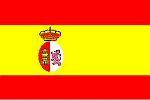 |
Spanish Period
|
General Information |
Monterey County Website |
Timeline | |
1539 |
Francisco de Ulloa explores the Golf of Mexico. |
1540 |
Hernando de Alarcón sailed up the Gulf of California; proved definitely that Lower California was a peninsula, not an island, and discovered the Colorado River. He was most likely the first European to see any part of Alta California. |
1542, Nov. 17 |
Juan Rodriguez Cabrillo first sights Monterey Bay and calls it the "Bay of Pines." |
1577 |
Sir Francis Drake lands near San Francisco and claims California for Great Britain. |
1587 |
Pedro de Unamuno enters Morro Bay, naming it "Puerto de San Lucas," and sends an expedition to the vicinity of present day San Luis Obispo, taking possession in the name of Spain's King Philip. |
1595 |
Portuguese born explorer Sebastian Rodriguez Cermenon, sailing from Philippines to Acapulco, explores the California coast from Eureka to San Martin Island looking for ports. He anchors near Point Reyes and makes a land claim for Spain without setting a foot ashore. |
1602, Dec. 16 |
Sebastian Vizcaino is the first European to set foot on the Monterey Peninsula. He claims it for Spain and names the harbor for the viceroy of Mexico, the Count of Monte Rey . |
1769 |
The Portola Expedition travels as far as San Francisco but failes to find Monterey Bay. Half the members of that expedition die of malnutrition and scurvy and Portola writes in his report that "...if the Russians wanted California, Spain should let her have it." (from http://calrepublic.tripod.com/history.html) |
1770, June 3 |
Father Junipero Serra, arriving by ship and Gaspar de Portolá, leader of the land expedition, meet in Monterey. The founding of the Mission San Carlos Borromeo at the Royal Presidio of Monterey marks the birthday of Monterey. |
1770, July 9 | Portola returns to Mexico and Pedro Fages assumes command of Alta California. |
1771, Aug. 24 | Construction of Carmel Mission starts. At Dec. 24, the San Carlos Borromeo Mission was moved completely from Monterey to Carmel. |
1774, Apr. 18 | Coming all the way from Arizona, Don Juan Bautista de Anza reaches Monterey and establishes a connection to the Missions in Sonora. |
1774, May 23 | Don Fernando Rivera y Moncada arrives overland and assumes command from Fages. |
1776, March 10 | Juan Bautista de Anza repeats his 1,200 mile journey from Arizona and arrives again in Monterey with more than 130 soldiers and settlers destined for San Francisco. |
1777, Feb. 3 | Rivera is replaced by Felipe de Neve. Monterey becomes capital of Las Californias. Neve governs both Alta and Baja California from Monterey. |
1786 | French circumnavigator La Pérouse maps the North American coast from Alaska to California and stops in Monterey before crossing the Pacific Ocean towards Asia. |
1791, Sep. 12 | Alejandro Malaspina, Italian circumnavigator in the Spanish navy stops in Monterey before leaving America for the Philippines. José Cardero, member of that expedition makes the first sketches of Monterey. |
1792 | After exploring the coast of British Columbia, Galiano and Valdes stop in Monterey on their way back to Acapulco. |
1793 | Vancouver visits Monterey again and writes a description of the Presidio. He also mentions an outpost at the Salinas River. |
1794 | Beginning of cattle ranching. Concessions for four outlying ranches are granted. |
1795 | Local Indians, most likely Ensen, a subdivision of the Ohlone, attack and burn all ranches. |
1796 | USS Otter, home port Boston, MA, commanded by Ebenezer Dorr is the first US ship to bearth in California. |
1801 | Governor Arillaga informs the viceroy that the presidio is "in ruinous condition." In the following years, especially following the Hidalgo Revolt of 1810, supplies are scarce and arrive only sporadically. Alta California's capital is reduced to a desolate outpost. |
1818 | Argentine privateer Hipólito Bouchard ransacks the town and burns the Presidio. |
ca. 1820 | Led by Corporal Manuel Boronda, the first families start to settle outside the presidio walls. |
1822, April | Word of the change in political control in Mexico reaches California. Governor Pablo Vicente Solá convenes a caucus including officers from the presidios and padres from the missions and swears allegiance to the new Mexican government. |
Back to top |
 |
Mexican Period
|
General Information |
Monterey County Website |
Timeline | |
1822, Apr. |
General Augustin de Iturbide is crowned Emperor of Mexico. |
1825 |
Governor Jose Maria Echeandia moves the capital to San Diego. |
1826, Nov. |
Jedediah Smith, guided by Mojave Indians, travels to the Great Southwestern Desert and arrives in the San Bernadino Valley. He and his fourteen associates were the first US-Americans to enter California by land from across the southwestern desert. On their way back to Utah in July 1827, they became the first European-Americans to cross the Sierra Nevada. |
1827 |
Major change to Spanish rule was the granting of land to private citizen. Only five years after the Mexican takeover, 14 private ranchos were located in the Monterey district and traffic with English and American vessels for the hide and tallow trade became an important boost to the economy. A picture by William Smyth during the winter of 1826-1827 shows a small number of scattered adobes without any formal property lines, fences, or streets. |
1827, Sep. |
Jedediah Smith returns to California and is ordered to Monterey to meet with Governor Echeandia. He is temporarely placed under arrest until Captain John Rogers Cooper vouches for him and his party. |
1831 |
Governor Manuel Victoria returns the capital to Monterey. |
1834, Aug. 9 |
A declaration by Governor Figueroa defines an immediate plan for secularization and dispersement of mission property. |
1836, Nov. |
Juan Bautista Alvarado and José Castro seize Monterey and force Mexican deputy governor Gutierrez to surrender. Alvarado declares California formally independent and later works out a compromise for Alta California to remain a Mexican province with increased autonomy with Alvorado as governor and Castro as president of the legislature. |
1837, Dec. |
The Mexican Government appointed Carlos Antonio Carrillo governor. Carrillo takes office in Los Angeles and civil war breaks out between Northern and Southern California. After several battles Alvarado forces Carrillo to leave California and Mexico recognizes Alvarado as governor. |
1842 |
The Mexican government sends Manuel Micheltorena to replace Alvarado as governor. |
1842 October 19 |
Wrongfully assuming that war has broken out between Mexico and the United States, Commodore Thomas ap Catesby Jones, commander of the US Pacific Fleet sails into Monterey Bay, demands surrender and raises the US flag. Two days later, he realizes that war has not broken out, writes a note to the governor, re-raises the Mexican flag and leaves. |
1843, May 1 |
The United States establish a consulate in Monterey and Thomas O. Larkin is appointed first US consul to Mexico. |
1845 |
After Governor Micheltorena restored property ownership to the missions, Alvarado and Castro rebel again against Mexican rule and force Micheltorena to leave California. New Mexican Governor Pio Pico governs from Los Angeles while Castro sets up a rival regime in Monterey. |
1846 Jan. |
US Captain John Charles Fremont who lead an armed exploratory party across the Rocky Mountains into California travels to Monterey and meets with Commandante General José Castro, Monterey Alcalde Manuel Diaz, former Governor Juan Bautista Alvarado, and U.S. Consul Thomas Larkin. |
1846 Mar. |
Fremont and his party of 62 armed volunteers take up a position in the Salinas Valley. Many Californians consider Fremont's party as foreign invaders and on March 8, Castro forms a militia to oust Fremont. Castro and Fremont engage in a three-day standoff until Fremont leaves for Oregon. |
1846, Apr. 25 |
War breaks out between the United States and Mexico. |
1846, June 10 |
The Bear Flaggers raise the grizzly bear flag and issue a proclamation of independence. |
1846, July 7 |
With 250 Marines and three ships and with war now really being at hand, Commodore John D. Sloat, new commander of the US Pacific Fleet, sails into Monterey Bay, raises the US flag at the Custom House and declares that "henceforward California will be a portion of the United States." |
Back to top |
 |
US-American Period
|
General Information |
Monterey County Website |
Timeline | |
1846, July 7 |
John D. Sloat becomes the first American Military Governor of California. |
1846, July 19 |
John C. Fremont returns to Monterey, bringing 160 riflemen to support Sloat. |
1846, July 15 |
Robert F. Stockton arrives and replaces Sloat as Military Governor. |
1846, July 27 |
Stockton appoints naval chaplain Walter Colton to be the first American Alcade of Monterey. In September, Colton will be officially elected into the same position. |
1846, Aug. 15 |
Colton and Dr. Robert Semple, a frontiersman from Kentucky launch California's first newspaper, "The Californian." |
1846, Aug. 15 |
Lieutenant Colonel John C. Fremont and General Andres Pico of Mexico sign the "Capitulation of Cahuenga," ending rival hostilities between Mexico and the United States in California for the duration of the Mexican War. |
1846, Nov. 16 |
Battle of Natividad. American troops under Capt. Charles Burroughs of Fremont's California Battalion are attacked by Californios under Com. Manual Castro at Natividad near San Juan Bautista. The Californios tried to capture Fremont's horses. Three Americans died in the battle and it has been speculated that the battle was an important American victory since the horses allowed Fremont's rifle companies to reach southern California where the were instrumental in the closing of the Mexican War. |
1847, Jan. 28 |
Company "F" of the 3rd artillery under Cptn. Henry W. Halleck takes over construction of the fort (then called "Fort Stockton"), establishing the first US military installation at the Pacific coast. |
1848, Jan. 24 |
Gold is discovered near Sacramento. The Gold Rush makes San Francisco the gateway to California, replacing Monterey as the main port. |
1848, Feb. 2 |
The Treaty of Guadaloupe Hidalgo ends the Mexican war. Mexico cedes Alta California and New Mexico (including Arizona) to the United States and recognized U.S. claims over Texas, with the Rio Grande as its southern boundary. |
1849, Mar. 8 |
Monterey's public school building, designed by Walter Colton is complete. It is the first public building built in California and will later be called Colton Hall. |
1849, Apr. 12 |
Bennet Riley becomes the last Military Governor. |
1849, July |
Military Governor Riley calles for a constitutional convention to be held in Monterey. Until September 1st, 48 delegates arrive in Monterey. |
1849, Sep. 1 |
The constitutional convention convenes in Colton Hall. |
1849, Oct. 13 |
After only six weeks, Californias first constitution is ratified by all 48 delegates. One of the last decisions made at the convention was to move the capital to San Jose. |
1850, March 30 |
By a special act of the first California legislature, Monterey receives city status - an importan upgrade from pueblo. |
1850, July 04 |
At Independence Day 1850 the Declaration of Independence was red in Spanish language for the very first time in a translation done by Ltnt. John Hamilton and Padre Ignacio Ramirez. |
1851 |
The Western Express and Stagecoach Company makes Monterey a regular stop. But - similar to the Greyhound lines of modern days - Monterey does not become part of the main north-south route but a dead-end route from San Jose. |
1853 |
Monterey's fishing industry begins with Chinese fishermen settling at Point Alones (now site of the Hopkins Marine Laboratory) and fishing Abalone. |
1855 |
After whaling declined in the Atlantic Ocean, whalers from the Azores moved to the Pacific. The first shore whaling company in Monterey started in 1854 but disbands within a year. In 1855, 17 Portuguese whalers establish the "Old Company," Monterey's first successful whaling company. |
1858 |
With the capital moved to San Jose and the port moved to San Francisco, Monterey enters an era of disregard and becomes Californias forgotten city. Richard Henry Dana wrote in Twenty-Four Years After: ". . . Monterey, which to my disappointment we did not visit. No; Monterey, the prettiest town on the coast, and its capital and seat of customs, had got no advantage from the great changes, was out of the way of commerce and of the travel to the mines and great rivers, and was not worth stopping at." |
1859 |
Monterey was not only forgotten, but also broke. The city declares bankruptcy and all town lots, together with thousands of acres of land are purchased by David Jacks and his partner D.R. Ashley for $1,002.50 in payment of debts. |
1865 |
The army abandons the military reservation and will not return until 1902. |
1872 |
The Southern Pacific Railroad reaches Salinas. |
1873 |
With the votes of Hollister (which in return got Salinas' votes to become an independent county), the county seat of Monterey County is moved from Monterey to Salinas. |
1874, Oct. 9 |
The Monterey & Salinas Valley Railroad is completed and connects Monterey with the Southern Pacific Railroad and the rest of the world. The first cargo shipped by train from Monterey is a lod of grain, bound for Liverpool. |
1880 |
The Del Monte Hotel opens and starts a new industry in Monterey: Tourism. |
1891 |
Stanford University opens Hopkins Seaside Laboratory at Lover's Point (now Hopkins Marine Station, the first marine lab on the west coast. |
1902, Mar. |
The first canning company opens on Ocean Vew Avenue. |
1902, July |
Monterey wins over serveral other locations to become the site of a new military base. |
1903, July |
The military installation is renamed Ord Barracks. |
1918 |
At the end of World War One, nine fish canning companies and 60 fishing boats operate in Monterey, producing 1.4 million cases / year. Monterey grows rapidly. The sardine industry employs 2,300 people, 70% of them women. Most of them live in the area above Cannery Row, called New Monterey. |
1919, Feb. 22 |
Samuel Finley Brown Morse acquires Del Monte Forest and the Del Monte Hotel, forms the Del Monte Properties Company and opens Pebble Beach Golf Links. |
1923 |
Marine biologist Ed Ricketts arrives in California and opens his Pacific Biological Laboratory in Pacific Grove. |
1923, Nov. 30 |
A devastating storm all but destroyes the wharf and the waterfront. |
1924 |
As a result of the "Thanksgiving Storm," Monterey is - yet again - broke. |
1925, Mar. 9 |
The financial crisis leads to an overhaul of the city charter. A new charter is adopted on March 9 and remains , with amendments, in force to this day. |
1929 |
John Steinbeck publishes his first novel, "Cup of Gold." It receives little attention. |
1928 |
Ed Ricketts'Pacific Biological Laboratory moves to 740 Ocean View Avenue (now Cannery Row) in Monterey. |
1928 |
Retired Presidio commander Roger Fish and Laura Bride Powers found the Monterey History and Art Association. To this day, the association is one of the main forces in the preservation of Monterey's history. One of its greatest achievements is the creation of the Path of History. |
1935 |
John Steinbeck publishes "Tortilla Flat" and receives the California Commonwealth Club's Gold Medal for best novel by a California author. |
1940 |
John Steinbeck wins the Pulitzer Prize for "The Grapes of Wrath", published in 1939. |
1940-45 |
In 1940, Ord Barracks is renamed Fort Ord. During World War II, Ford Ord is one of the major military training facilities in the United States. |
1943 |
The Navy leases the Del Monte Hotel facilities for a preflight training school during World War Two. |
1945 |
John Steinbeck publishes "Cannery Row". Only a few years later, the sardine fishery collapses and Monterey's era as a fishing town comes to an end but the myth, created by Steinbeck continues to this day and contributes largely to Monterey's tourism industry. |
1946 |
The Defense Language Institute, founded in 1941 in San Francisco, moves into the Presidio of Monterey. Today, the DLI is the world's largest foreign language institute. |
1947 |
The National Pro-Amateur Golf Championship, which started in 1937 and was suspended during World War Two finds its permanent home in Pebble Beach and has been held here ever since. |
1951, Dec. |
The Naval Postgraduate School, founded in 1912, moves into its new campus at the old Del Monte Hotel. |
1955 |
The Monterey Institute of International Studies opens. Its mission is "...to teach languages in their cultural context and to enlighten students in the importance of cross-cultural understanding as a means to avoid the recurrence of wars." First languages taught were German and French. (see MIIS history.) Together with the DLI and other institutions, MIIS established Monterey's reputation as the Language Capital of the World. |
1958, Sep. |
The California Test Bureau, founded in Los Angeles in 1926, relocates to Monterey. Acquired by by The McGraw-Hill Companies in 1965, CTB/McGraw-Hill soon becomes a leading publisher of standardized achievement tests for children and adults. Today, CTB/McGraw-Hill is Monterey's largest employer. |
1958, Sep. |
The Monterey Jazz Festival takes place for the first time. Performers were, amongst others, Dizzy Gillespie, Louis Armstrong, and Billie Holiday. Today, the Monterey Jazz Frstival is the longest running Jazz festival in the world. |
1966 |
Another marine science institute, the Moss Landing Marine Laboratories opens ath the shores of the Monterey Bay. |
1967, July |
The Monterey International Pop Music Festival brings 32 acts and three days of peace and love and Rock'n Roll to Monterey. The festival was the first big performance for Jimi Hendrix in the US and the breakthrough for Janis Joplin. It is widely regarded as the beginning of the "Summer of Love." |
1984, Oct. 20 |
TheMonterey Bay Aquarium opens. From the very start, the Aquarium has been a major tourist attraction and a center of marine environmental education. Together with the Monterey Bay Aquarium Research Institute, the aquarium supports Monterey's reputation as the world's prime oceanographic research center. |
1992, Sep. 18 |
Congress establishes theMonterey Bay National Marine Sanctuary. With 5,322 square miles of ocean and 276 miles of coastline it is the larges Marine Sanctuary in the United States, supporting one of the world’s most diverse marine ecosystems. |
1993 |
After 90 years, Fort Ord is closed in what will be the largest base closure in the United States. |
1995 |
California State University Monterey Bay opens in Ford Ord; putting parts of the former military base to new use. |
1998, June |
The National Ocean Conference underlines once more Monterey's leading role in marine research and education. |
1998, Oct. 30 |
Monterey enters the space age. PANSAT, a small satellite designed by students at the Naval Postgraduate School, is launched from the space shuttle Discovery. |
Count of Monte Rey |
 |
Juan Bautista Alvarado |
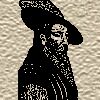 |
Juan Bautista de Anza |
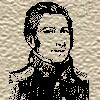 |
Hipolito Bouchard |
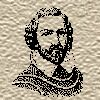 |
Juan Rodriguez Cabrillo |
 |
Manuel Jose Antonio CarderoCreator of Monterey's First Picture Spanish Artist Jose Cardero began his career in 1791 as a cabin boy at Malaspina's expedition and gradually became one of the expedition's most important artists. In September 1791, he did the first drawings of the Monterey Presidio and the Carmel Mission. |
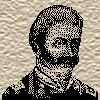 |
Jose Castro |
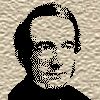 |
Walter Colton |
 |
John Rogers Cooper |
 |
Miguel Costanso |
 |
Pedro Fages |
 |
John Charles Fremont |
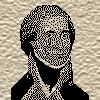 |
Dionisio Alcala Galiano |
 |
Jean-Francois de Galoup, Comte de La Perouse |
 |
David Jacks |
 |
Thomas ap Catesby Jones |
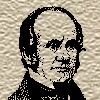 |
Thomas O. Larkin |
 |
Alexandro Malaspina |
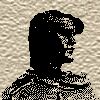 |
Felipe de Neve |
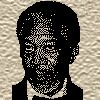 |
Alexo Nino |
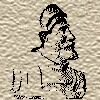 |
Gaspar de Portola |
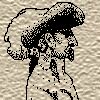 |
Fernando Rivera y Moncada |
 |
Father Junipero Serra |
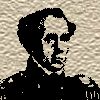 |
John Drake Sloat |
 |
Cayetano Valdes y Flores |
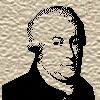 |
George Vancouver |
 |
Tiburcio Vasquez |
 |
Sebastian Vizcaino |
 |
Gaspar de Zuniga y Azevedo, Count of Monte Rey |
 |
Volker Moerbitz |
  |   |